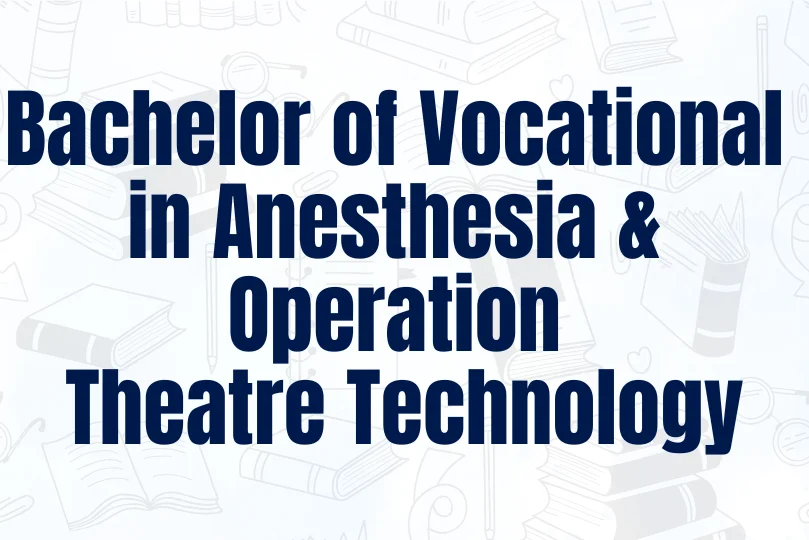Research on UV.
A History of the Indian University Education System, Including Its Development, Reforms, and Current Trends
The system of higher education that is present in India has a rich time-line and an extensive coverage in modern. In the past the system has undergone an enormous expansion. It ranges from ancient learning centers (such like Nalanda or Taxila) and modern universities. The number of universities was just 30 in India during the period 1950-1951 and by 2021-2022, India was home to 1 168 colleges and 45,473 universities. This growth, illustrated below graphically, shows how the system has grown according to the demands of the country.
The increase in the amount of universities and colleges in India illustrated in green and blue in the period 1950-51 through 2021-22.
1. University Development in India: A Brief History and Evolution
The development of higher education in India goes back to millennia ago and is believed to be a practice that dates back centuries. The first centers for interdisciplinary research include Taxila which was founded in the 6th century BCE as well as Nalanda University, which dates from the fourth century until the 12th century CE. "Nalanda stands out as the most ancient university of the Indian Subcontinent," according to the United Nations Educational, Scientific, and Cultural Organisation (UNESCO) that has been providing education to students for over 800 years. Other ancient establishments, like Vikramashila and Vallabhi which were backed through the Royal Family. They provided subjects such math, astronomy theology, medicine as well as many other subjects.
In the period after the 12th century an erosion of indigenous institutions was a consequence of the influx and fragmentation of government. This is known by the name of Mediaeval Period. However the fact that education was handed down via oral traditions Madrasas, monastery madrasas and other institutions. Centers like Darul-'Ulum (Delhi) as well as Madrasa Nizamiyya (Hyderabad) were accountable for the preservation or the continuation of many crucial works from the fields of literature and science during the Sultanate as well as the Mughal period.
The Colonial Era, which lasted from 17th century to 20th century The British college of higher education was founded. In 1857, three of the initial universities were created. The three institutions included Calcutta University (established on 24 January 1857), Bombay University (established in June 1857) as well as Madras University (established in September 1857). Sir Charles Wood's Despatch (1854) offered recommendations for Western-style universities. Examining and awarding degrees were generally handled by these universities that were modeled after those of the University of London and were principally responsible for the associated colleges. In the course of time as well as in line with various University Acts enacted by the British Indian government, more colleges were founded including Punjab University in 1882 and Allahabad in 1887, and many others.
The early years of Independent India (1947-1960s): After the independence of the country, India placed a strong prioritization on the development in higher learning. The year 1956 was the year that there was the University Grants Commission (UGC) was set up with the intention of funding and coordinating establishments. A framework for education in the national level was created through The University Education Commission (Radhakrishnan Commission 1948-1949) and also the Kothari Commission (1964-1966). These commissions laid the basis to establish the structure. Numerous institutions of importance to the nation, such as those of national significance, such as the Indian Institutes of Technology, founded in 1951, and the Central Universities, were established under the guidance of these commissions. They also established the National Policy on Education (NPE 1968) was approved by the federal government in 1968 to promote technological and scientific education and ensuring that everyone has the same access to these disciplines.
2. What Role Do Universities Play in India's Economic Development?
The economic growth and socio-economic progress of India is heavily dependent on India's university system. They educate the workforce, drive research and shaping the nation's values for the future are among the activities they carry out. It can be "fundamental for achieving full human potential, developing an equitable and just society, and promoting national development," according to the opening to the National Education Policy 2020 (NEP 2020). High-quality and high-quality education is going to "determine the future of our country," considering the fact that India is home to the largest number of young people on the globe.
In the period after the 12th century an erosion of indigenous institutions was a consequence of the influx and fragmentation of government. This is known by the name of Mediaeval Period. However the fact that education was handed down via oral traditions Madrasas, monastery madrasas and other institutions. Centers like Darul-'Ulum (Delhi) as well as Madrasa Nizamiyya (Hyderabad) were accountable for the preservation or the continuation of many crucial works from the fields of literature and science during the Sultanate as well as the Mughal period.
The Colonial Era, which lasted from 17th century to 20th century The British college of higher education was founded. In 1857, three of the initial universities were created. The three institutions included Calcutta University (established on 24 January 1857), Bombay University (established in June 1857) as well as Madras University (established in September 1857). Sir Charles Wood's Despatch (1854) offered recommendations for Western-style universities. Examining and awarding degrees were generally handled by these universities that were modeled after those of the University of London and were principally responsible for the associated colleges. In the course of time as well as in line with various University Acts enacted by the British Indian government, more colleges were founded including Punjab University in 1882 and Allahabad in 1887, and many others.
The early years of Independent India (1947-1960s): After the independence of the country, India placed a strong prioritization on the development in higher learning. The year 1956 was the year that there was the University Grants Commission (UGC) was set up with the intention of funding and coordinating establishments. A framework for education in the national level was created through The University Education Commission (Radhakrishnan Commission 1948-1949) and also the Kothari Commission (1964-1966). These commissions laid the basis to establish the structure. Numerous institutions of importance to the nation, such as those of national significance, such as the Indian Institutes of Technology, founded in 1951, and the Central Universities, were established under the guidance of these commissions. They also established the National Policy on Education (NPE 1968) was approved by the federal government in 1968 to promote technological and scientific education and ensuring that everyone has the same access to these disciplines.
Some of the main outcomes include
The Indian institutions produce million of graduates every year. It is what they call as human capital. In 2021-22, as an example, approximately 1.07 million students achieved success at their college or university. Students who graduate from the program explore careers in fields that include management, engineering, medicine education, research, and teaching which will help address the critical shortfalls in the field and in the service sector. The strong system of universities is the basis of India's Information Technology (IT) and pharmaceutical and space sectors in addition to India's growing knowledge economy.
Research and innovation are two methods that universities, especially ones that are focused on scientific and technical disciplines, help in the advancement of technology. A number of Indian institutions, such as that of Indian Institutes of Technology and the Indian Institute of Science, have contributed to invention of patents and companies that have contributed for the economic. Apart from making a contribution to knowledge across the globe they also aid in resolving local concerns (such as health and agriculture) through research.
By providing education, universities aid in social mobility and the inclusion of youth with socioeconomically marginalized background. Between 2011-12 and 2021-22 the number of students belonging to Scheduled Castes in higher education rose between 15% and 26 percentage of their age and the enrollment of students belonging to Scheduled Tribes increased from 11 percent to 21 percentage. These numbers are based on figures provided by the federal government. In 2021-22 the index of gender parity is a measure of the ratio of females to males enrolled at higher institutions has also increased by around 1.01 which indicates that women were able to access university education. The role that universities play in the pursuit of socioeconomic equality can be seen in these changes that are backed through reservation rules and scholarships.
Educational attainment and the growth of GDP are intimately linked to each other, as is the significant connection between them. (As one example from the figures supplied from the World Bank, for every an additional year of higher education GDP growth increases. In the world of business it is evident that the contribution of highly trained university graduates in the field of creativity and productivity can be significant. Promotion of exchange of ideas and knowledge between India's diverse regions is yet another method by that universities are a major contributor to the country's overall unity. Simply put, the administrators of India think of the higher-education system as a crucial part of the nation's quest towards becoming a developed country and an economy in the world which is globally efficient.
To conclude, Indian universities constantly contribute to the nation's intellect and human resources through providing educational opportunities to around 43.3 million people (2021-22) in addition as giving a huge and growing number of female students or from poor circumstances. The large number of college graduates which India creates is a crucial element in determining the nation's growth as well as its future.
3. Revolutionary Changes and Important Policy Milestones (1857-2024)
The policies of India's higher education have been developed gradually over the course of time. These are the most significant milestones:
The three universities of the present, Calcutta, Bombay, and Madras were founded in the year 1857 following the passage of the Universities Act, which also included the examination system which was modeled on the British examination system.
In the period 1904-2016 Planning and expansion was executed. The committees, for instance the Sadler Commission in 1917, looked into and proposed improvements and universities were created within the provinces.
The 1950s saw both the United Government of India (UGC) as well as the Indian Institutes of Technology (IITs) were founded through the governing government following independence in 1952. The UGC was created by an legislation that paved the way for it in the year 1956. From 1951 to 1964 between 1951 and 1964, the Indian Institutes of Technology (IITs) were set up in cities like Kharagpur, Bombay, Madras, Kanpur, and Delhi. Between 1948 and 1949 The Radhakrishnan Commission argued for the expansion of Indian languages, and the importance on research.
The Kothari Commission, which was created between 1964 and the year 1966, offered recommendations on an unifying framework for education (the "three-language formula," which connects schools and universities) as well as the creation of finance committees and the importance of research and development in rural areas. The result was the National Policy on Education (NPE) in 1968. It acknowledged the role education is a key element of building nations, and boosted the amount of science-based education and created new institutions.
The National Education Policy of 1986 (National Education Policy, 1986) put a strong emphasis on vocationalization, the importance of integration across the nation, as well as equality of accessibility. The policy was implemented by the government of Indira Gandhi. Indira Gandhi National Open University Indira Gandhi National Open University (IGNOU in 1985) was among the universities that were created in the wake of this policy to extend the scope of its operations.
In the 90s, India expanded the scope of development at universities. This has led to the establishment of numerous private and deemed institutions that were subject to regulation surveillance (governed through the UGC as well as state statutes). The emphasis was on the importance of computer literacy as well as technical education during the update of 1992 to the Programme of Action (PA) to promote NPE. Institutions were accredited through the National Accreditation Council (NAAC) in 1994. Later, in 1995 The National Institutes of Technology were upgraded to important national institutions.
Autonomy and deregulation were the two of the recommendations issued in the Yashpal Committee in 2009, in which they were concerned about the globalization of institutions as well as accountability. To assess institutions and their performance, it was introduced the India Ranking Framework (NIRF) was launched in 2015. The goal for the introduction of RUSA (2013) consisted of a goal to boost the performance of the public university system. In the year 2016 the Right of Children to Free and Compulsory Education Act (2009) came into effect on the school level that in turn increased demand of higher educational.
The policy change that is considered to be the biggest change in the past decade and is called NEP 2020. It will take effect with the 2019-2020 period. One Higher Education Commission (HECI) assumes the functions of the UGC as well as the AICTE in the National Education Policy 2020 (NEP 2020). Additionally, the NEP 2020 will foster multidisciplinary universities (MERUs), flexible curriculum, various exit choices in degree programs, a stronger emphasis on research, and internationalisation. Furthermore the NEP 2020 clearly promotes using online learning as well as distance education. The key NEP modifications regarding higher education
Undergraduate degrees are able to be finished in a period of three or four years. In addition, they are able to be earned with exit certificates (certificates such as diplomas, certificates or diplomas). Transdisciplinary bachelor of Arts degree which takes 4 years to complete and also includes the option of research is a latest standard. Additionally, an academic bank of credits can allow transfer of credits from one institution to one.
Modell Multidisciplinary Education and Research Universities (MERUs) that are of similar quality to the Indian Institutes of Technology and Indian Institute of Management are becoming new institutes. Multidisciplinary education will be introduced in the older single-stream schools. As per the requirements for accreditation and quality the autonomy of students will be permitted.
Higher education establishments (HEIs) must create innovation centres as well as technology labs, startup incubators and advanced research facilities to focus on research in their establishments. It is the National Research Foundation (NRF) provides financial aid to Indian universities in order to promote an "vibrant research and innovation culture."
Verticals that deal with accreditation, regulation as well as funding and learning goals are to be incorporated into the Higher Education Commission's (HECI) reforms to the regulatory system. The HECI will have less bureaucratic red tape, and greater autonomy will be facilitated and the quality of education will be guaranteed by transparent standards.
With the help of facilities for students from abroad and collaboration through cooperation, through cooperation and facilities, National Education Policy (NEP) helps to establish India as an international studying destination. There is a possibility that the most prestigious universities around the world could be requested to set up their operations in India and Indian universities will be urged to set up campuses in other nations.
To broaden the access to learning and encouraging it to be is continuous throughout one's entire life This policy allows authorized institutions to offer open-access and online distance learning (ODL) programmes with a top quality.
The system was gradually shaped throughout the years through a variety of laws and policy documents, like those from the University Grants Commission Act of 1956, Acts on technical education as well as the recent State University Acts. The recent changes put a greater emphasis on autonomy, innovation as well as involvement in the world community. These landmarks, including statutes that were adopted during the colonial age up to the National Education Policy 2020, have transformed Indian university education to an extensive education system that continues to evolve.
4. Influence of the New Energy Policy 2020 and Future Developments
It's it that National Education Policy 2020 that will set the direction of steps to ensure the continued growth of university education across India. It is expected that the National Education Policy (NEP) will be implemented according to its recommendations including the flexibility of learning, interdisciplinary university as well as expanded research and international connections in the next couple of years like the above illustration. The most significant expected effects and changes include:
The NEP strives to raise the standards of global excellence by creating MERUs as well as providing independence to institutions who are able to demonstrate outstanding results. The result will be an improvement in the performance of institutions. It will also ensure that quality is maintained with the use of a new accrediting system and will incorporate an online "Academic Bank of Credit" as well as learning outcomes boards. It is only a matter of time before India will eventually witness a more number of institutions achieve international ranking.
Higher Gross Enrollment: The ambitious target of reaching fifty percent of enrollment total by 2035, which represents an increase of around 28 percent currently and will require the creation of more schools and the introduction innovative methods of providing. UGC has given acceptance to an array of online courses as well as plans for the creation of degree programs online and the launch additional programs via Online and Distance Learning (ODL). As an example it is there is a National Education Policy (NEP) allows reputable institutions to offer online degrees with a high quality, and the government has made an inventory of 102 colleges which are able to offer programs that are online (Regulations 2020).
International Collaborations International Collaborations: The NEP encourages interaction between cultures at a global scale. It is anticipated that there will be increasing the amount of exchanges between students and faculty, collaborative research collaborations and branch campuses for institutions within other nations. India has reached agreements that will increase student mobility. The latest "International Students Office" idea for every institution of higher learning is a clear call to action for students from different countries. As of now, there about 46,878 students from more than 170 countries who are who are studying abroad. The number is likely to grow.
The establishment of the National Research Foundation in 2023 (under supervision by the NEP) will bring about more funding to research. This would help to build the ecosystem of innovation. Further assistance to facilitate the development of startups at colleges has been provided by the industries and the government. In the Atal Innovation Mission and technical cell for entrepreneurship at the universities are a couple of initiatives which are moving forward towards expanding.
Digitalisation and the integration of Massive Open Online Courses The COVID-19 virus has led to an increase in the number of students who enrolled in e-learning. Based on that, NEP promotes the provision of online learning that is high-quality and efficient. In the near future, there are several major trends
The standards of the UGC's 2020 allow completely online degrees along with massive online courses on the internet (MOOCs). Massive open online courses in India (MOOCs) platforms like SWAYAM and NPTEL have attracted thousands of students. As an example, NPTEL has reported more than 3.13 million enrolled students and over 7500 courses which have been completed successfully that suggests an enormous impact. There's a wide range of universities that offer blended classes or have massive online on-line courses (MOOCs) in their courses.
EdTech as well as Hybrid Learning: Traditional teaching methods are now being complemented by EdTech companies like Byju's and Unacademy in addition to campuses that have learning management platforms (LMS) platform. Universities also use online certification systems as well as massive open online classes (MOOCs) as well as virtual laboratories for teaching the skills needed for remediation. These blended models are expected to grow as a result of the National Educational Policy's (NEP) demand for flexible credit system which include life and vocational abilities.
The new digital credit bank known as The Academic Bank of Credits (ABC) it will permit students to accrue courses at a range of universities. It makes it simpler for students to transfer courses, dismantles inflexible course frameworks as well as encourages students to pursue their studies all throughout their life (for instance, students could stop their education for work but then resume their studies).
In addition to the concept of physical mobility, there is a growing movement towards "internationalisation at home," which encompasses the incorporation of international curricular components. International recognition can also be increased in addition to the possibility of merging online education with universities in different countries.
It is easy to comply with regulations: The NEP expects a regulatory framework which is simpler. The lengthy approval procedures which are currently in place for institutions and courses that are new will be streamlined in the coming years. In the meantime, the government has begun the process of unifying regulations and dissolving different approvals like the councils for teachers' education and pharmacists.
In a nutshell, the implementation of NEP 2020, which includes the introduction of new financial regulations and rules which will help in the upgrading of Indian institutions. The most anticipated developments include the creation of campus that is interdisciplinary as well as the increasing accessibility of entry for international institutions, as well as expanding access to digital technology. The aim of all these developments is to improve the quality of higher education in India more flexible accessible, competitive, and inclusive in the global arena.
5. Many different types of universities are available in India
There are a variety of Indian university, that can be distinguished from each other by the authority that founded them as well as the source of funding. In general:
| No. | University Type | Establishing Authority / Legislation | Funding Source | Degree‑Awarding Authority | Examples |
|---|---|---|---|---|---|
| 58 | Central University | Act of the Central Government | Central Government | UGC (Central Act) | JNU, University of Delhi, BHU |
| 479 | State University | Act of the State Legislature | State Government | UGC (State Act) | University of Madras, University of Mumbai, Anna University |
| 124 | Deemed University | Deemed to be status under UGC Act (Section-3) | Autonomous / Self‑governing | The institution itself | IISc, Manipal Academy of Higher Education, BITS Pilani |
| 455 | Private University | Act of the State Legislature (private sponsorship) | Self‑funded (private) | UGC‑approved | O.P.Jindal Global University, Amity University, VIT Vellore |
Apart from the above establishments, India hosts numerous other colleges affiliated with colleges for independence...
Additionally, there is a section that includes "autonomous institutes" (IITs, NITs, AIIMS, IIMs, IISERs, etc.)...
At the end of 2023, the educational scene in India comprises about 1,114 colleges of all types...
6. Affluent and highly respected institutions of learning
Many institutions from India have stood out because of the excellence of their academic programmes, their lengthy experiences, and outstanding reputations
It is located in Bengaluru situated in Bengaluru Indian Institute of Science is an accredited university focusing on research and development in areas of high-tech technology and science. It has been consistently ranked as no. 1. in the country's National Institutional Ranking of Universities (NIRF) and is recognized for the high quality of the research conducted by it.
Jawaharlal Nehru University, often called JNU is a central university that is known for its achievements in the field of the social sciences, foreign studies and humanities. Junior National University (JNU) is regularly ranked as one of the top institutions in India (NIRF # 2 by 2023) and is renowned for its active university culture as well as its research.
Jamia Millia Islamia, located in Delhi it is a major Interdisciplinary institution that ranks third in the National Institutional Ranking Framework (NIRF) and is known for its management, engineering and social science faculties. Jamia houses an array of students as well as modern facilities.
It is Jadavpur University in Kolkata is an institution run by the state that is known for its outstanding performance in engineering, science as well as the humanities (NIRF #4). Due to its research activities and the fact that it provides the combination of academic and technological education and research, it has been recognized as an institution of excellence.
One of the most storied and most prestigious institutions of its kind in India, Banaras Hindu University (BHU, Varanasi) is placed fifth in the National Institutional Ranking Framework (NIRF) and provides a vast range of educational programs comprising science, arts engineering, agriculture as well as medicine. Its prominence BHU could be due to its status as a heritage institution and its massive campus as well as its contribution to the sciences and culture.
The University that is Delhi (DU) has been one of the central institutions that are especially well-known for its undergraduate college, which includes schools like St. Stephen's, Hindu, Miranda House, and other. The programs of DU and its alumni have a huge impact, even though its NIRF score (#11 for 2023) is less than the ratings of other universities. It is because of the size of the school (hundreds of thousand of pupils) and the strict admission criteria. In terms of campus jobs, DU is also a well-known destination for famous recruitment agencies.
(NIRF (9th NIRF) Aligarh Muslim institution (AMU, Aligarh) is a central university with been around for a long time and is widely known for its work in medical, engineering and Urdu. It's remarkable because of its unique blend of the traditional academics with modern ones, in addition to having massive endowments.
It is known for its research programmes that focus on the social sciences as well as sciences, the small size of its classrooms and its beautiful campus, the University is located in Hyderabad (UoH) has been described as an institution of central importance that has been in the top ten on the National Institutional Ranking Framework (NIRF).
Regarded as Private and Deemed Institutions:
A deemed private university (NIRF #6) which is famous for its medical and engineering courses, Manipal Academy of Higher Education (MAHE) is believed to be one of the top of its kind in the nation. One aspect that make Manipal's name is the global university network as well as industrial connections.
It is the Amrita Vishwa Vidyapeetham located in Coimbatore is private, deemed college that is ranked 7th and famous for its research in the areas of biotechnology and engineering. The university has been awarded the NAAC AAccreditation and is a leader both in health and education.
While they're not legally independent, some Indian Institutes of Technology (IITs) are considered to be one of the most prestigious engineering colleges in the world. A few examples of IITs include IIT Bombay and IIT Delhi. They are renowned for their academics, which can be extremely challenging, and they are well-placed. According to international surveys, Indian Institutes of Technology (IITs) as well as Indian Institutes of Science (IISc) are more successful than the vast majority of Indian universities (for instance, IIT Delhi rated 28th worldwide in graduate job opportunities).
Some other notable institutions are those at the Birla Institute for Technology and Science Pilani (BITS-Pilani is a recognized university) because of its exceptional engineering program and The Vellore Institute of Technology (VIT is a private institute) to offer industry-linked engineering courses, and the Sri Ramachandra Institute (medical) for its medical program. Furthermore, state universities, including Savitribai Phule Pune University, offer top postgraduate courses.
In essence, the top institutions that are renowned in India include those that are renowned for having excellent research and are backed by faculty who are qualified and meet stringent admissions requirements. While NIRF rankings as well as global surveys can help determine the status of these institutions, their reputes the institutions can also be influenced by factors of a qualitative nature, including connections to industry, legacy and freedom of academics.
7. The Influence of Universities on the Education System and Young People
The universities and colleges of India represent the top level of the pyramid of education in the world, and can have an impact on how students learn, develop their thinking and are able to contribute to the society. India has over 1,000 colleges and universities, as well as around 60,000 colleges that collectively are responsible to educate 43.3 millions students (as as of 2021-2022). Transformation of students' raw potential into an effective workforce and educated population is achieved through universities by providing a high-quality courses, research opportunities and training in the field of emotional intelligence. Particularly, universities are accountable in shaping the educational curriculum across all levels. For example, through the education department in universities with the capability to prepare future teachers as well as through outreach programs designed to enhance the fundamentals of education. Institutes like those of the National Institute of Educational Planning and Administration (NIEPA) work with schools of education to offer instruction for teachers and administrators in the schools, thus aiding in improving educational quality given for students in the elementary and secondary grades.
Furthermore, the campuses act as the ideal place to nurture young people to grow outside the confines of academia. In addition, there are National Service Scheme (NSS) as well as National Cadet Corps (NCC) divisions that are located in Indian colleges. They are accountable for developing leadership skills as well as social responsibility and discipline in students. The campus festivals and societies encourage collaboration, innovation as well as entrepreneurialism. club and student unions promote discussions on issues of national importance. Universities and colleges also provide student-run organizations. Students are able to gain experience with international competition as well as problem-solving activities like inter-university techno-cultural festivals and contests for coding. The competitions are a part of competitions in the finals for the International Computer Programming Contest (ICPC) where Indian teams often get to compete. Young people in India get a sense of nationalism, along with the ability to communicate and build confidence through participation in these competitions.
Regarding education colleges can significantly expand perspective on personal as well as professional perspectives. Institutes of India that are thought to be world class excellence, like those at the Indian Institutes of Technology (IITs) as well as The Indian Institutes of Management (IIMs) along with central universities as well as the newly called "Institutes of Eminence," can attract students with outstanding academic accomplishments and encourage them to adopt disciplined study habits and connect young people to knowledge from all over the world. The multiplier effect, also known by the term "knowledge economy" has been established, for instance through alumni networks of the most highly regarded colleges in India and universities, responsible for the growth of a number of top technology firms and major businesses. In the case of IIT Bombay, Indian Institute of Technology (IIT) Bombay, the Indian Institute of Technology (IIT) Delhi and The Indian Institute of Science (IISc) were three Indian schools that received top rankings on the global rankings for the period 2022-2023. While only a small number of Indian institutions are at the top of all colleges, their growing prominence is indicative of the increasing quality of their educational programs.
Young people's empowerment can be further enhanced by colleges by way of government-sponsored programs. The most talented students across the nation are participating in national projects for development and traditional arts with programs such as the Prime Minister's Internship Programme or Viswakarma Yojana, for instance. To tackle the problems prevalent in rural zones The Unnat Bharat Abhiyan is a call to faculty and students to participate. Universities are encouraged to coach students in STEM and vocational training in the context of the National Education Policy (NEP) 2020. The aim is to achieve an aim to better prepare students for employment in the near future. Higher education is a major focus. National Education Policy (NEP) puts a strong emphasis on inquiry, critical thinking as well as transdisciplinary education on the undergraduate level. These reforms are designed to create graduates that have a greater understanding of the world.
Particularly for the growing amount of youngsters college campuses play a crucial part in facilitating the transition for higher education and job possibilities. With the expansion of higher education The Gross Enrolment Ratio (GER) has been increasing from 23.7 percent in 2014-15, and will reach 28.4 percent by 2022. The result is an increase in students from diverse backgrounds getting degrees and pursuing professional careers. Students of the first generation, women, and those from communities with a low socioeconomic status can be eligible for subsidies on seats or scholarships to many public schools that help to increase the accessibility of the access to education. In fact, around 81 % of students in higher education are in public schools of state with tuition costs which are much lower than the private institutions. They, despite having some serious shortcomings when it comes to funds, can provide reasonably priced educational opportunities in sciences, engineering and arts to millions students living in small towns. This is just one way by that universities aid in the creation of future generations of scientists, leaders, entrepreneurs, and educators which in turn helps to imprint the ideals and abilities that these people can bring to Indian society and into the economic system itself.
8. Function in the Areas of Research, Innovation, and International Competitivity
Higher education establishments that are located in India are a key element in the ecosystem of innovation and research in the nation. Despite the fact that India's investment in research and development remains small (about 0.65 percentage of GDP by 2020-21) however, the funding will allow for the maintenance of an extensive collection of research organizations and academic institutions. Indian institutions that are believed as among the most prestigious around aid in the development of India's technological abilities by conducting innovative research as well as patents. The volume of research papers published by India released between 2017 to 2022 was approximately 1.3 million. This means that India is now the fourth most prolific producer of academic publication worldwide. Over the course of that period in which research was conducted, it has increased by 54%. That's nearly twice as high than the growth average around the world. In the United States of America (about 4.4 million papers), China (approximately 4.5 million papers) as well as China (approximately 4.5 million papers), and the United Kingdom (approximately 1.4 million papers) were the only nations with more publications during this time. In light of the current trend, India is on the edge of surpassing United Kingdom in terms of total research output.
The increase in the position of India at the Global Innovation Index (from 81st in 2015, to 39th in 2024) is the direct consequence of the nation's increasing legislation that supports technology and research-related firms.
The growth of India within the ranks of nations that are innovative has been astonishing. In 133 nations, India was placed 39th on the Global Innovation Index in 2024 this is an impressive rise from 81% in the year 2015. With this steady increase, it's evident that research institutions and universities play a significant role in the process of advancing innovations. It has also been an important amount of funding from government programs like Startup India (2016) and Atal Innovation Mission (2016) that have financed for incubators and research centers within schools of higher education. In order to offer assistance entrepreneurs as well as entrepreneurs Atal Innovation Mission has built hundreds of Atal Incubation Centers (AICs) in the management and engineering colleges. They AICs come with loans of up to Rs10 crore. These grants are disbursed across five years. Over 1.49 thousand companies are recognized as entrepreneurs in India through 2024, under the Startup India program. The majority of these start-ups came out of university incubators as well as tech parks.
Research clusters with world-class standards were also set up in Indian institutions. When it comes to determining the world's top 100 Science and Technology clusters, the World Intellectual Property Organisation (WIPO) has included a number of cities from India that include Mumbai, Delhi, Bengaluru and Chennai which are within the top fifty. It is interesting to note that institutions like those of the Indian Institute of Technology (IIT) Mumbai, the Indian Institute of Science (IISc) Bengaluru and Anna University Chennai are co-located with biotech parks as well as research and development laboratories as well as technology companies can be seen in this. To illustrate it is evident that the Pune area has become an area of research and development of chemical and pharmaceutical innovations. It is because of the existence of research labs like CSIR NCL as well as universities like Savitribai Phule Pune University. In a similar vein, the Delhi-Mumbai-Bengaluru corridor is home to significant national research institutes (like as TIFR and DRDO labs) that are located in close proximity to university campuses. Accelerating the transformation of research into products or businesses is made easier by clusters that increases India's international performance. In recognition of this, India was rated fourth globally on the Science and Technology Cluster ranking by the World Intellectual Property Organisation (WIPO).
The level of productivity and influence among Indian academics on the contrary, are not the same as from other countries. While there is an impressive quantity of work being produced but the quantity of citations are very low. While India has the fourth highest output, India ranked ninth internationally in terms of citations from 2017 to 2022 as per the QS research (2023). It is evident that a lot of papers have only a small impact across the world. The research of China isn't just greater than that of India, which is three times more of output and more than five times as many publications. This is an indication of the challenges in place: a lot of Indian research studies have been published in journals that have smaller impact, and the collaboration between industries as well as universities is at its infancy. Due to this, it is important that the National Environmental Policy 2020 (NEP 2020) as well as other research organizations encourage high-quality research projects as well as patenting and commercialisation and dissemination of the research. For example it is the fact that the government has been offering grants to industries as well as the highly sought-after Prim Minister's Research Fellowships for the purpose of retaining the most talented individuals and to focus on important industries like Artificial Intelligence, Sustainable Energy as well as biomedicine.
The world's innovation indexes show that the pace of innovation is growing. For the purpose of ranking innovation, India has risen to the top spot in all of Southern Asia area and the middle-income countries. The rank for innovation of India was raised from 33rd place from 2023 to the 33rd position in 2024. It is evident that the country was also able to improve its production measurement. In the last ten decades, India and China have been considered to be the countries with the most significant growth rates in terms of technological innovation. University institutions in India contribute significantly to specific areas. In particular, India is the world top in terms of research papers that are published in the field of computer science as well as petroleum engineering. This reflects the nation's strong activity in both fields. Private institutes are growing to be a significant part of the picture because they offer flexible curricula as well as programs that concentrate on the latest technology to boost the amount of applied research.
The universities in India put a lot of emphasis on the transfer of technology and entrepreneurialism to foster the development of. Technology Business Incubators (TBIs) can be found on a variety of campuses. The incubator located at Amrita Vidyapeetham has created more than 100 companies as well as the Entrepreneurship Development Cell at IIT Kanpur offers funding to student entrepreneurs. In addition, the Institution of Eminence (IoE) initiative also has provided selected institutions as private or public that have autonomy as well as money to seed their research and conduct top-quality research. Since the beginning of 2017, IoEs have generated more than 1.5 thousand papers as well as 14 lakh citations. This is with the growth rate being significantly greater than the typical for all of the world. In addition, the universities are making relationships with international research networks. Collaborations are being made with institutions like CERN, the European Organisation for Nuclear Research (CERN) for physics research, and the National Aeronautics and Space Administration (NASA) for aerospace as well as overseas laboratories (such such as Nanyang Technological University in Singapore) offer international expertise and funding for Indian campuses.
In comparison to global benchmarks, it provides an understanding of both the achievements made as well as the problems that are still to be resolved. It is clear that the United States and China continue to be the top two countries for R&D (R&D) expenditure and outputs. In order to give a context it is estimated that for instance, the United States spent over $806 billion in research by 2021. China invested $668 billion. The total of India's R&D investment is roughly 70-80 billion dollars, which represents a small portion of the GDP. China allocates about 4.4% of its GDP for education. In contrast, the United States devotes approximately 5-6 percent of their GDP to educational activities (including the research). China has double the number of university graduates every year than those in the United States does (3.94 million in comparison to 2.01 million) It also produces more of graduates than India does. In the NEP 2020 aims to close the gap and is a key policy objective. It is a key policy goal. NEP 2020 targets raising higher-education research and development up to 2.2% of GDP (from about 0.7 percent currently) as well as raising GER up to 50% by 2035. For a summary, Indian universities have made notable strides in increasing number of researchers and increasing the quality of their outputs. But the degree of their ability complete the transfer of research to positive economic and social outcomes will depend on continuous changes in the financing system in terms of quality and quantity, as well as possibilities for collaboration across the globe.
9. Information Regarding Enrolment, Rankings, and Placement
Current data provide a glimpse of the scale and effectiveness of India's higher-education system:
In the year of AISHE (2021-22) 2021-22, the quantity of students studying in higher education was 43.3 million. Around 32,588 students earned their Ph.D. degrees in 2021-22 in the period of 78.9 percent are undergraduates. 12.1 percentage are postgraduates. A majority of female and male students are enrolled. The number of females was about 20.7 millions females making up 47.8 percent of the total. For enrolment statistics and enrollment, there was a Gender Parity Index is now at 1.01. Scheduled Castes and Other Backward Classes and Scheduled Tribes comprise the largest proportions of students and is indicative of the increasing number of reservations as well as access (for instance, the amount of students being classed as SC or ST has quadrupled since the year 2011).
According to the American Institute of Higher Education (AISHE) reports that of the 1,168 universities registered which are owned by the state (58.6 percent) as opposed to 483 that are managed by private organizations (41.4 percent). Around 74 percent of students have enrolled in public institutions. However, around 26% of students are in private schools. The figure is around 85 percent that are in courses which cover broad areas like science, arts and business. There are 11% are in engineering, 5 percent in education, 4percent in medical and on. The data are available in comprehensive tables supplied by AISHE show a wide range of involvement across the various fields.
Institutions and universities are evaluated annually through the National Institutional Ranking Framework (NIRF) who is accountable of determining their ranking. It is the Indian Institute of Science (Bengaluru) was ranked first in the 2023 university category which was then Jadavpur University (#4), Jamia Millia Islamia (#3), Jadavpur University (#4) and BHU (#5). IISc, AMU, University of Hyderabad, Delhi University Delhi University, AMU, and Calcutta University were among the other universities that were among the top ten. While the focus is mostly on large multidisciplinary institutions however, these rankings (which is based on research, teaching outreach, as well as various other elements) offer benchmarking. (In the same way, in categorized in different NIRF categories, technical schools such as IITs receive top marks on other criteria, including research.)
It's impossible to get precise national position figures through centralised tracking. The issue of employability is equally problematic. However the results of surveys indicate that there's a gap between educational attainment and work. In the Economic Survey 2023-24, only about 51% of college graduates can meet the requirements of employers this means that nearly half of the graduates need assistance in enhancing their skills. Positively, India is quite successful when it comes to producing students who can be technically proficient. In the case of IIT Delhi, for instance, International Institute of Technology Delhi (IIT Delhi) was ranked as 28th globally according to the Global Employability University Ranking (2025) which is the top ranking of Indian universities. The results show that graduates of specific universities are able to achieve great outcomes. For the process of securing jobs, many universities depend on their campus recruitment efforts as well as initiatives to be entrepreneurial, while some of the most prestigious institutions (such such as IITs as well as the top NITs and IIMs as well as other institutes) achieve record-breaking placement rates which exceed 100% (100 100 percent). The problem of employment is being addressed by both universities and the government by establishing industrial partnerships, as well as the delivery of training for employees, as well as encouraging internships.
In a way The results of the studies and ranking conducted by the government paint an image of a huge institution which produces thousands of graduates each annually. Thanks to NIRF and NAAC growing numbers of colleges are getting high-quality and better job market outcomes, despite the fact that many of them face challenges.
10. Building a Nation, Contributions to Society, and Contributions to the Economy
Universities are the engine which drive the development of the society as well as the economy. To help boost the growth of India's economy and development, the universities educate thousands of youngsters that result in the creation of highly skilled professionals who run large industries, including manufacturing, technology as well as services. As an example, every year colleges in India provide many thousands of scientists, engineers doctors, managers, and engineers that can fill needy positions in health, technology, and administration. It is crucial to remember that some of the top technical schools, like that of Indian institutions of Technology (IITs) and the National Institutes of Technology (NITs) and have an immediate influence on the entrepreneurship tech industry. Many IIT graduates have created large IT companies, like Infosys and HCL and global corporations such as Adobe as well as Motorola. In a notice to the press published by the government the IITs that were founded by six founders each produced between $300-$400 billion to the world economy over their time of existence. This is evidence of the progress their graduates have accomplished in areas such as development, innovation, business-building as well as high-paying jobs.
In the industrial sphere college contributes to the growth of the country by conducting research that stimulates economic growth. IARI, PAU, and UAS campuses are a few examples of colleges in the agricultural field that are involved in the creation of new varieties of crops and agricultural techniques that increase food security. The ICMR-affiliated institutes and such as the All India Institutes of Medical Sciences (AIIMS) as well as other research institutes are accountable in conducting biomedical and epidemiological research, which forms the base for public health policies. As an example, researchers from Indian universities unraveled the genetic code of the virus SARS-CoV-2 in an earlier stage of COVID-19, and this allowed researchers to design vaccines. Engineering institutes collaborate with defence and energy industries. The incubator located at IIT Madras has produced businesses within the area of green technology. IIT Kanpur collaborates with the Indian Space Research Organisation (ISRO) in the development of satellites. While these achievements are often obscured from view by the public however, they're vital. As an example, Indian space missions, green energy projects, and exports of pharmaceuticals are all based on the wisdom from universities.
In addition, higher education can contribute in the development of society objectives. Social sciences research is conducted at central universities, such as Jawaharlal Nehru University (JNU) as well as Delhi University for a long duration. These institutions have a major influence on national debates regarding issues of economy, governance, and foreign policies. Social work colleges as well as law schools provide education for individuals who play a role in the advancement of the cause of justice and democracy, such as advocates, judges as well as public employees. In particular, a large majority of the policy advisers and public servants have training at institutions like that of the Delhi School of Economics or the University of Hyderabad. Universities that have programs focused on the humanities as well as journalism have had a huge influence on the arts and media, further expressing the social ideas that shape society. Additionally, outreach programs carried out by universities, like the legal aid clinics managed by law faculties or rural health centers which are managed by medical schools, directly assist communities, which increases access to healthcare.
In terms of economics The education sector is an important contributor by itself. The number of employees employed in the industry (faculty staff, students as well as researchers) as well as the perfect place to invest as well as commerce. With the increase in international students studying at universities has increased (by many thousands per year) Institutions have joined the business of exporting higher education. It is true that the United States and China have an increased number of international students in comparison to India has, however initiatives like Study in India are working to make India to a global learning force. It's a common practice for start-ups in education within the country and companies in edtech (such such as Byju's and Unacademy as well as other) to partner with universities in the development of materials and programs, thereby combining educational institutions and private enterprises. Because of the rise in disposable income, a large amount of households belonging to the middle classes are investing in private universities as well as coaching institutions that in turn increase the economy. For a brief overview, colleges are not just a place to maintain and offer job opportunities (not exclusively for graduate students however, they also provide construction workers, housing as well as services in close proximity to campus) They are also a source of innovation that can lead to the development of new companies.
A nation's development is an additional vital aspect to be considered. The campus of the universities in India reflect India's rich heritage as well as its diversity, which help to foster civic values among the students. The celebrations of Independence Day, Republic Day and other festivals gather students from diverse cultures and countries. Students from universities that belong to the National Service Scheme (NSS) take part in projects such as disaster relief or social work. This contributes to the growth of a spirit of giving back. Self-sufficient India which is sometimes referred to "Aatmanirbhar Bharat," has been supported by Indian organizations of Technology (IITs) as well as other similar organisations by the development of programs and incubators that allow students to create their own technologies instead of relying on imported products. Also, it is a sign of the important role universities play in solving social issues (such as environmental and poverty) by introducing new technologies. Schools are putting more emphasis on courses that promote social entrepreneurship.
They are also bolstered with the help of measures taken by the government. Since it was established in RUSA Rashtriya Uchchatar Shiksha Abhiyan (RUSA) has made a significant expenditure of more than 30 million in the state-owned universities with the intention of improving both facilities and the academic program. RUSA has seen the transformation of a number of universities into colleges and the establishment of a huge number of new campuses that have increased accessibility. The same approach is employed in organizations like the Unnat Bharat Abhiyan, which allows universities to be part of the growth of the rural areas of India and also in the GIAN (Global Initiative for Academic Networks) initiative that is a collaboration between Indian faculty with researchers from various nations. Every time, the universities play a role in local development. In particular, universities that focus on agriculture can be responsible for boosting the efficiency of farmers in their local area as well as engineering colleges. in charge of promoting the business within the area.
It is now clear that India's image on the global stage has been enhanced by India's top universities. Researchers and institutions that perform exceptionally are rewarded with world-class honours (graduates from India's Indian Institute of Technology are among those who have been given Rhodes Scholarships and Indian researchers have received Fields Medals as well as Nobel distinctions) and, consequently, facilitate international collaboration. Some of the most effective practices are brought in our country in the United States through joint degree programmes and research partnership. There is a growing amount agreements (MoUs) between universities such as the latest deal between Pondicherry University and Texas State University to offer dual degree programs as well as exchanges, shows that Indian universities are being increasingly integrated with the academic community around the world. Establishing these relationships will not just benefit the both professors and students, it also improves the standing of India as a society that value knowledge. Indian institutions play a vital role in national development through the various avenues, which include socio-economic production interaction, and culture. But, due to a variety of reasons it is not generally recognized.
11. Confrontations Facing the Educational System and Possible Solutions
In spite of these accomplishments however, the system of universities is India faces numerous issues. Quality and equity in access to higher education is an issue that is encroaching on. Even though it is true that enrollment has grown (GER around 28% by 2022) about 70% of all students who are eligible between the ages 18 and 23 remain not in a formal education. Most students who enroll in institutions have inadequate facilities, which leads to unjust educational outcomes. Based on the data offered by accreditation organizations only a tiny percentage of Indian institutions can meet even the most basic requirements for quality. As an example, less than 10 percent of all state-run universities possess fully functioning research facilities. Staff shortages can make this even more difficult: a recently conducted study of NITI Aayog found that at the state-owned public universities, which comprise 81% of students over forty percent of the teaching positions were vacant which resulted in a negative student-teacher ratio of just thirty one to one. The infrastructure of these institutions are often outdated and only a small percentage of these have libraries or labs which are equipped. If taken in conjunction this shows that many graduates aren't receiving adequate instruction.
Another issue is the absence of funding and investment in research. India is still experiencing an insufficient amount of government investments in education and research. R&D spending from the government (including research at universities) vary from 0.6-0.7 percent of GDP significantly less than the 2 percent R&D goal set by the NEP as well as the international counterparts. The same is true for education. the total expenditure for education is less than 3 percent of GDP. This is significantly less than the six percent suggested. The consequences of this include lack of PhD opportunities, a lack of laboratory equipment, and inadequate pay for members of academic institutions. Due to this deficiency in investment it has led to the phenomenon of a brain drain as the majority of highly educated engineers and academics remain looking for work elsewhere. When discussing the issue on the topic, it's mentioned that Indian researchers frequently move into countries such as that of United States of America, Germany or Canada because these nations offer higher incomes and have better infrastructure. In addition, with laboratories and funds with world-class facilities, countries such as Singapore, the United States and Singapore are capable of attracting researchers to come from India.
Concerning the relevance of employment In addition, there's a issue. A lot of graduates aren't prepared for work as per surveys and research, which could be due because their curricula are not up to the demands of the industry. As an example, while there's a significant number of graduates from engineering, the majority are not equipped to work that is why employers rate the potential employability of Indian graduates to be around fifty percent. The social consequences are caused by this disparity in abilities: if growth is not able to create jobs with the same speed and there is more of a rise in the percentage of students who do not have jobs. To tackle this problem, government is working on strengthening relationships between academics and business in order in promoting the expansion of vocational education into university education (NEP 2020 requests that the creation of vocational programs, internships as well as apprenticeships to be added to degree programmes). A few programs, for instance the PradhanMantri Kaushal Vikas Yojana (PMKVY), work with schools to assess the technical skills of students. Students in their final year are more often expected to take part in industry work experiences through certain state-sponsored programs.
The process of improvement is also hindered by challenges related to governance as well as rules. The higher education system in India has a history of having to comply with strict laws. The quality and approvals are overseen by organizations like NAAC, the UGC, AICTE, and NAAC however, complying with the regulations is a lengthy procedure. Private universities can face challenges with adapting to changing standards especially during periods that are experiencing economic growth, when there were many non-regulated universities were created. It will soon be a brand new Higher Education Commission of India (HECI) acting as one regulator, in accordance to National Education Policy 2020 (NEP 2020) but its execution will take time. Meanwhile, the meritocracy has been undermined by issues like political influence within college administrations as well as the abuse of affiliation and reservation methods. To combat this to these issues, the government has passed new laws to increase the autonomy of colleges. This includes those governing the Institutes of Eminence and other autonomy awards. These grants give elite institutions with greater autonomy regarding curriculum, finances, and faculty positions, thus getting around the usual constraints. At present there are around thirteen public institutions and ten private schools are awarded IoE accreditation. This allows them to adopt flexibility in administrative and academic processes.









.webp)







.webp)
.webp)
.webp)














.webp)
.webp)





.webp)























.webp)






















.webp)

















.webp)
















.webp)


















































































.webp)



































.webp)
.webp)











































































.webp)











































